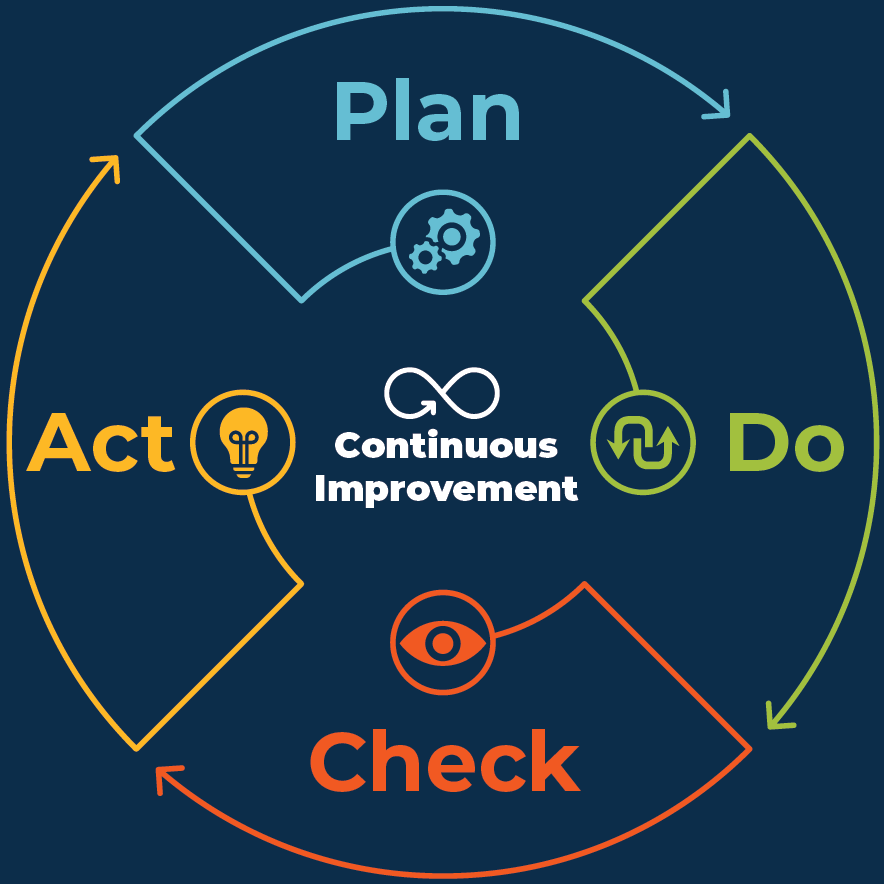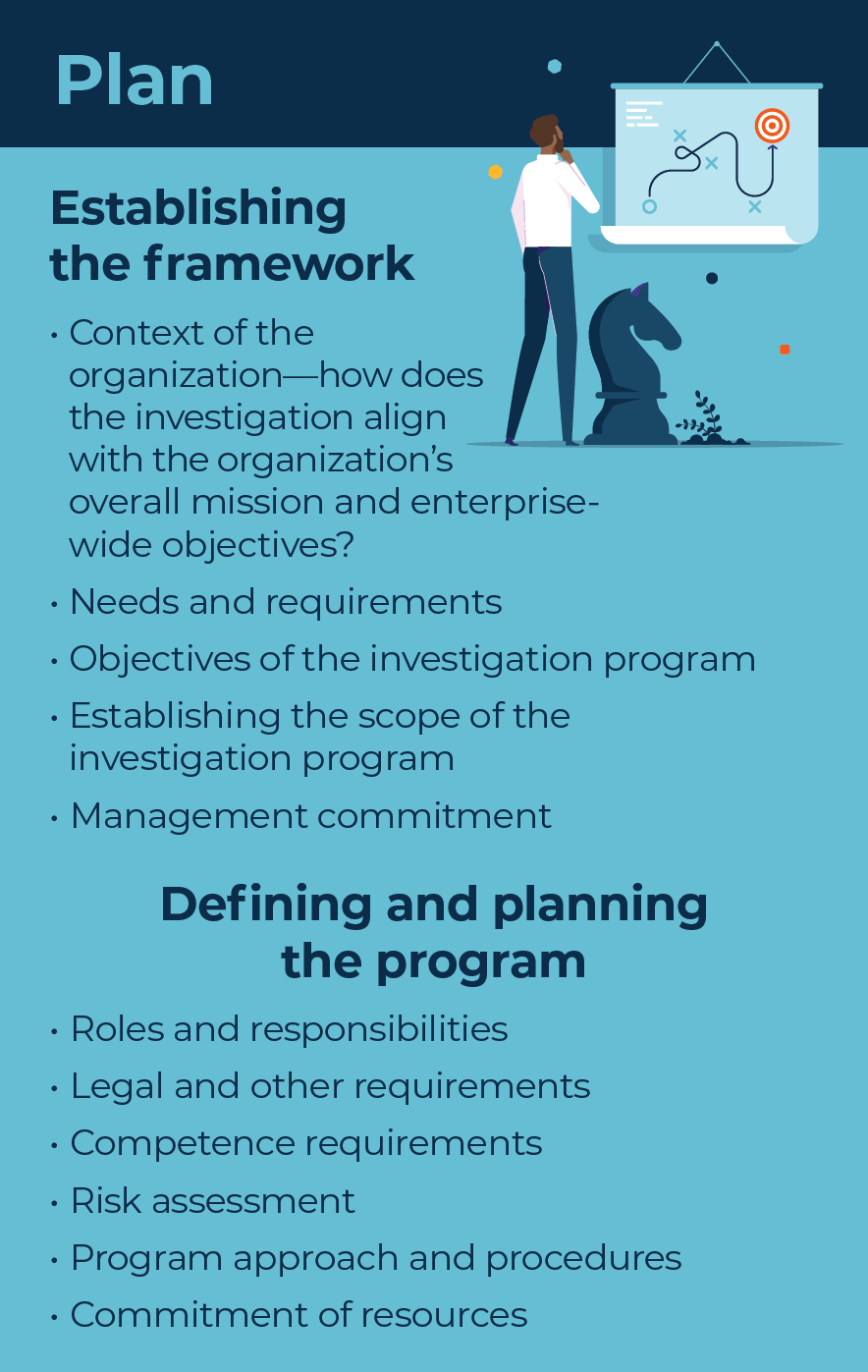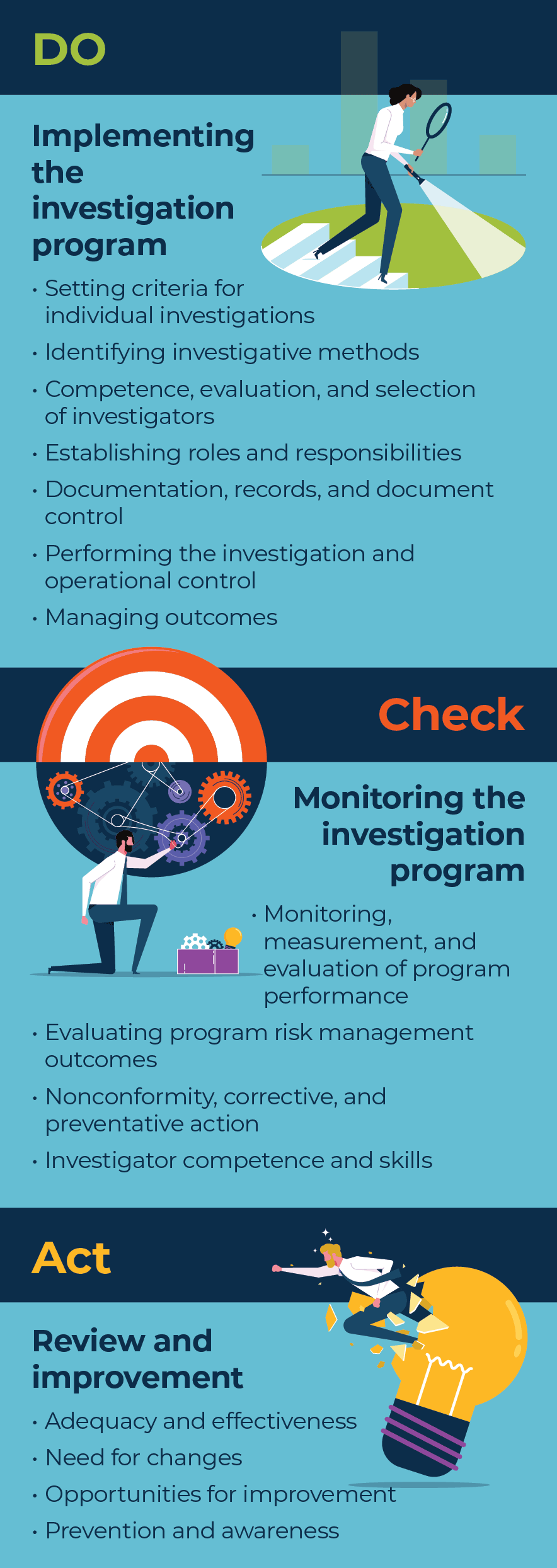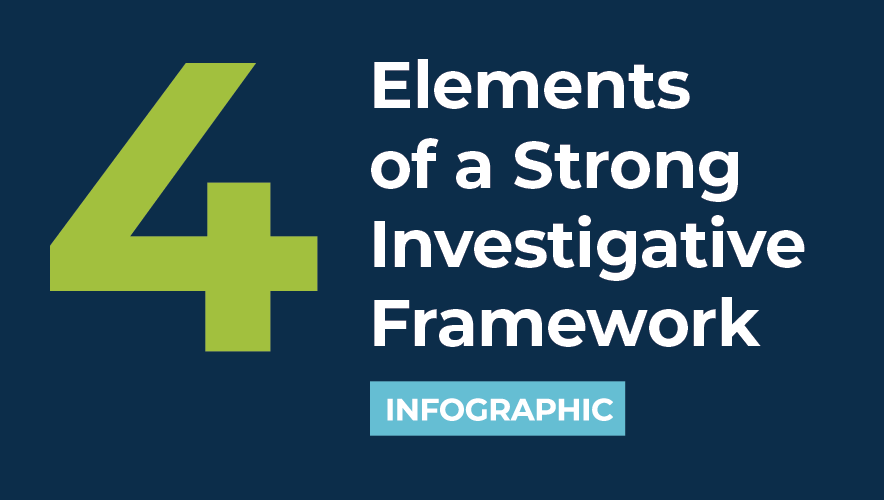Infographic: 4 Elements of a Strong Investigative Framework
When properly planned and executed, a successful investigation can result quantifiable results—recovery of stolen assets or intelligence, dismissing dishonest employees, or coordinating with law enforcement to support a successful civil or criminal prosecution.
“In order for the results of an investigation to be useful, it should have well-defined objectives understood within the business and risk management context of the organization,” according to the Investigations Standard from ASIS International. “…By using the PDCA model, the organization clearly defines the objectives, methodologies, and processes thereby enabling the efficiencies of repeatability and scalability.”
SponsoredCognitive biases can lead to faulty analysis and flawed conclusionsIn this new report by Liferaft, learn the top five most common mental heuristics that can sabotage workplace investigations. |
Because no two investigations are exactly the same, the PDCA model (Plan. Do. Check. Act.) can be modified while still offering an outline that supports an investigation. Managers can improve their investigations by monitoring, measuring, reviewing, and, when necessary, modifying the process’s components with a continual improvement cycle, the standard advises. Findings from these reviews should be analyzed by leaders or department heads who can green light necessary changes or improvements.



Source: ASIS International Investigations Standard, ASIS International. 2015.















